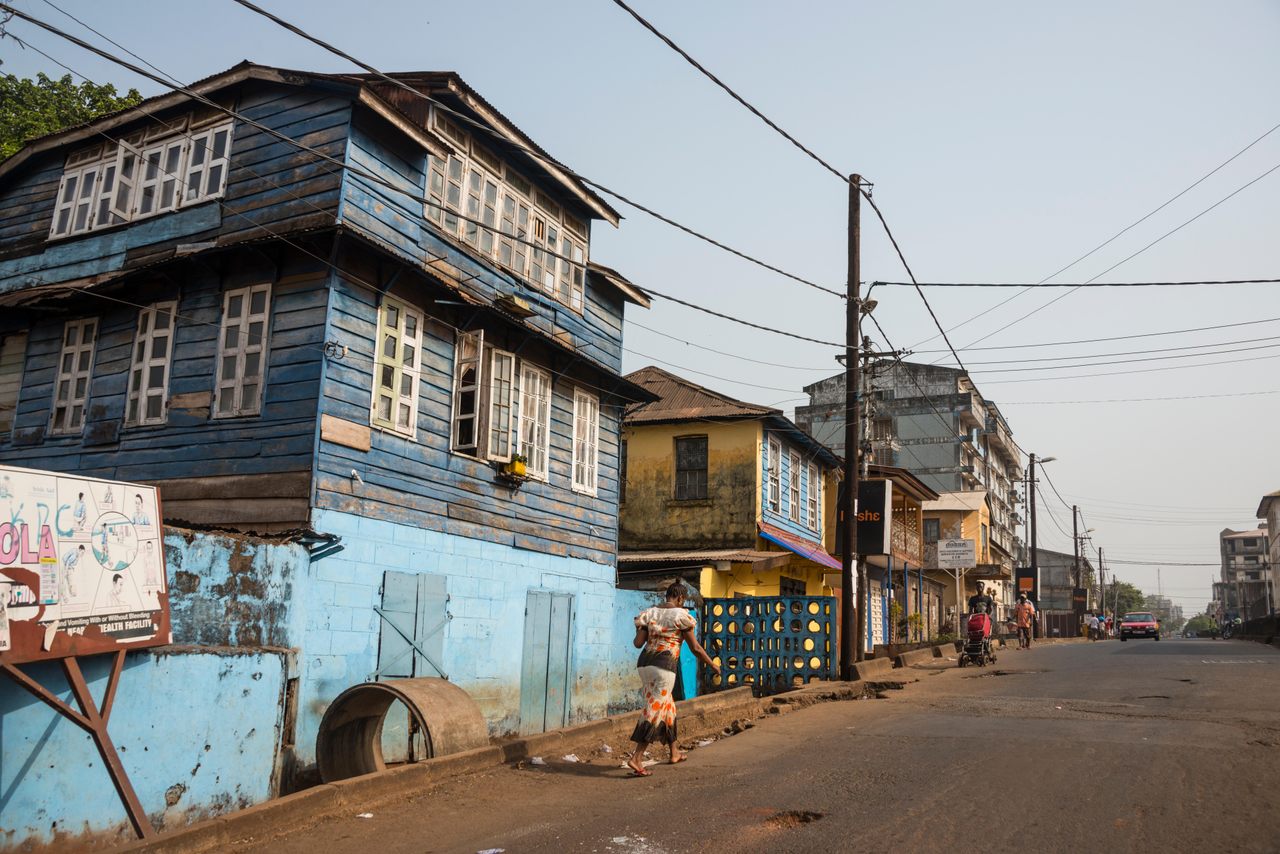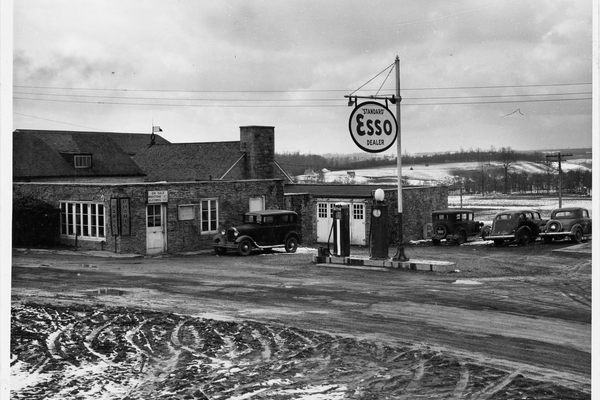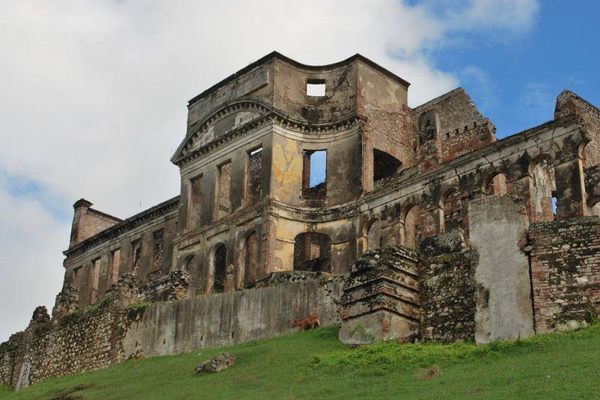The Surprising Southern Roots of Sierra Leone’s Krio Homes
Freetown’s Krio homes preserve an enduring legacy of resilience—but the question of how to save them looms.
When Sierra Leonean Iyamide Thomas was 12 years old, she traveled to the East Coast of the United States with her mother. It was her first visit to the greater Washington D.C. area, and she found the many wooden and clapboard homes dotting residential streets fascinating…and familiar. “I thought, ‘Wow! We have these in Freetown,’” says Thomas, referring to her country’s capital city. “I think I even said to my mother, ‘Look, they also have Krio bod os.’” Thomas, a heritage practitioner, now lives in London, but that moment still resonates with her. It was more than the local architecture that Thomas had seen on that trip, it was her own country’s history.
Sierra Leonean Krios are the descendants of freed African-American, Afro-Caribbean, and liberated African slaves coming from places like Britain, Nova Scotia, the U.S., and Jamaica. Returning to their ancestral land after securing their freedom (some even served as soldiers in the American Revolution), Krios made their homes in and around Freetown, a city founded specifically as a settlement for formerly enslaved people in 1792.
Today, Krios make up only a small percentage of Sierra Leone’s overall population (estimates range from 1.2 to three percent, with Thomas herself being of Krio descent); Krio culture is related to that of the Southern Caribbean and U.S. Creole people.
However, the Krio language—a mix of all the different influxes that ended up in Freetown, including bits from Portuguese and French traders, with English as its base—is Sierra Leone’s most widely spoken language. Throughout Freetown, Krio bod os (“board houses,” a name that refers to the materials used in their construction) still play a prominent role in the capital city’s urban landscape—though many people question how much longer they’ll be able to survive without proper upkeep and protection.
The Krio board houses are the physical legacy “of a group of people who endured so much in their quest for freedom,” says Isatu Smith, the managing director of the West Africa Heritage Consultants and a Krio herself. “We must strive to preserve them for future generations,” but doing so may prove challenging.

Within the first decade of Freetown’s founding, its residents had already built hundreds of these bod os, resembling the kinds of homes Krios had become familiar with in the American South: timber-frame structures with stone foundations and shingled roofs, often with shuttered windows and covered porches, and garret windows for conversing. They lined well-planned streets, like those found in Virginia and later Nova Scotia.
“Owning property [such as a Krio home] was a mark of freedom,” says Thomas. Krio people had been forcibly taken from their homes, separated from their families and cultures, and trafficked to far-away, unfamiliar places where they were forced into slavery: “It was crucial that they felt free” after immigrating to Freetown.
For more than 200 years, these houses weathered Sierra Leone’s tropical monsoons and high humidity—the bulk of them without much upkeep. Then came the country’s devastating civil war in the 1990s, where advancing rebels destroyed many of the ones still standing. Fires consumed others, and some have been quietly torn down to make way for more “modern” concrete structures.
Although a few thousand bod os still exist in Freetown and within the villages of its peninsula, there is no official count. Many of those remaining look as though they were assembled piecemeal, with painted sheets of corrugated zinc covering up rotted boards, and their facades, in colors like green, red, and yellow, faded.
Their thin wooden walls are not so easy to maintain, as the country has lost much of its timber through overharvesting and slash-and-burn agriculture, making the material both pricey and hard to find. However, while often decrepit and drooping in parts, these one, two, and three-story structures have been passed down for generations, and share a commonality that transcends borders.

“The Krio story is so unique in that it doesn’t just involve Sierra Leone,” says Thomas. “It’s also a story of Jamaica, America, the British, and Nigeria,” where many freedmen and freedwomen eventually returned (these descendants are called Saros, a word meaning “first son”) after initially resettling in Freetown.
But in a country with limited resources and threatened landmarks (a storm toppled Freetown’s most visible landmark, the 400-year-old Cotton Tree, which stood as a symbol of the city’s settlement, in May 2023), many Sierra Leonians just don’t see the importance in preserving the homes.
“Sierra Leone [is] a Third World country where conservation issues have not had the benefit of gradual and focused development as in more advanced countries,” wrote Smith, in a summary of findings and recommendations on bod os conservation that she penned for Freetown’s Monuments and Relics Commission.
She notes that pride in cultural heritage has been eroded through the systematic undermining of colonialism, making it difficult to engage local residents. “There is very limited awareness among the public of heritage issues and how and why they should be engaged with [them],” she wrote. “Monuments and relics are important reminders of our past, no matter how unpleasant or horrible that past may be.”
To help garner interest in keeping Sierra Leone’s krio heritage intact, Smith has come up with a list of possible strategies. One is to convert a bod os into a museum dedicated to the country’s colonial history as part of the wider British Empire.
Another is to restore some board houses and transform them into AirBnBs. Crowdfunding ventures and an “Adopt-a-bod-os residence” program, in which individuals and organizations can actively partake in the preservation efforts, are also viable creative solutions, wrote Smith in her summary, for safeguarding these cultural assets.

Over the last two decades, several other projects have worked to draw attention to and preserve Freetown’s bod os.
Back in 2006, the late British photographer Tim Hetherington completed a six-month archival project for the British Council recording Freetown’s “fast disappearing” Krio homes in Dem Ole Bod Ose, a colorful catalog booklet and accompanying bank of digital images.
In 2014, Killian Doherty, an architect with an interest in post-conflict and fragmented sites and settlements, began mapping Freetown’s historic Krio and colonial homes through GPS, encouraging Freetown residents to get involved. There’s even a Freetown Krio Museum & Cultural Center in the planning stages.
In 2019, Thomas launched her own co-curated exhibit, The Krios of Sierra Leone, at the Museum of London Docklands, highlighting the story and culture of the Krio people, from their traditional dress to their architecture. Although the Covid pandemic kept the exhibit from traveling elsewhere, Thomas is still hoping to take it on the road.
For now, travelers’ best bet for seeing this slice of history is in the mountain villages around Freetown, including Regent, Bathurst, and Gloucester, as well as the coastal village of York. Some companies, such as the U.S.-based Palace Travel, incorporate visits to Krio villages into their tours, though stand-alone bod os are easy to spot throughout Freetown. Just look for those wooden symbols of perseverance that exemplify the city’s enduring spirit and honor its storied past.
























Follow us on Twitter to get the latest on the world's hidden wonders.
Like us on Facebook to get the latest on the world's hidden wonders.
Follow us on Twitter Like us on Facebook